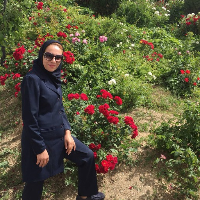Localization of knowledge management categories based on the basic model of knowledge building In the artistic field of the Islamic Propaganda Organization
Author(s):
Article Type:
Research/Original Article (بدون رتبه معتبر)
Abstract:
Objective
Localization of knowledge management categories based on the basic model of knowledge building includes the following: Objectives, identification, acquisition, development, sharing, maintenance, use and evaluation of knowledge in the artistic field of the Islamic Propagation Organization. Research method
The research method was qualitatively based on the Delphi approach. The research population consisted of 21 knowledge experts and senior managers of the organization. The research data collection tool was a questionnaire based on a five-choice liquor spectrum, with a very small to very large scale. This method has been used to determine knowledge management indicators based on the model of knowledge building with the help of experts. The statistical population of this research in the Delphi section is made up of experts who are aware of the subject who were 21 experts including managers and people with artistic degrees in the field of art of the Islamic Propagation Organization. Purposeful and judgmental sampling method was used to perform the Delphi process. Findings
Since Kendall coefficient represents a measure of consensus of Delphi panel members, the findings show that knowledge identification category with a coefficient of 0.75, knowledge acquisition category with a coefficient of 0.1, knowledge protection category indicator with a coefficient of 1 with strong consensus, the category of knowledge development with a coefficient of 0.65 with a strong consensus, the category of knowledge measurement with a coefficient of 0.52 and the category of knowledge use with a coefficient of 0.55 with a medium consensus, the category of knowledge objectives with a coefficient of 0.33, and the category of knowledge distribution with a coefficient of 0/35 were consolidated and localized with weak consensus. Conclusion
In the category of knowledge distribution, the indicator of support for rules and regulations with an average of 9.4 is more important and in the category of objectives under the categories of determining the level and capacity of knowledge, determining goals and culture of knowledge, determining strategic goals of knowledge to describe and increasing the capacity of the need for future knowledge, the operational goals of knowledge in order to act the normalized knowledge of strategic knowledge with an average of 4.2 percent is of greater importance. Therefore, these subcategories need more attention.Keywords:
Language:
Persian
Published:
Journal of Modern Thoughts in Education, Volume:15 Issue: 4, 2020
Pages:
138 to 158
https://www.magiran.com/p2199705
سامانه نویسندگان
مقالات دیگری از این نویسنده (گان)
-
The Effect of Knowledge Sharing on Social Entrepreneurship with Regard to the Mediating Role of Public Libraries' Social Responsibility
Solmaz Anoshi *, Golnessa Galyani Moghaddam,
Library and Information Science, -
Assessing the Effectiveness of Information Services Marketing at Allameh Tabataba'i University's Central Digital Library
Seiedeh Zeinab Hosseini, Mehdi Alipour Hafezi *, , Mitra Samiei
Journal of Academic Librarianship and Information Research, -
Providing a model for implementing knowledge management in the artistic field of the Islamic Propaganda Organization.
*
Journal of Knowledge Retrieval and Semantic Systems,



